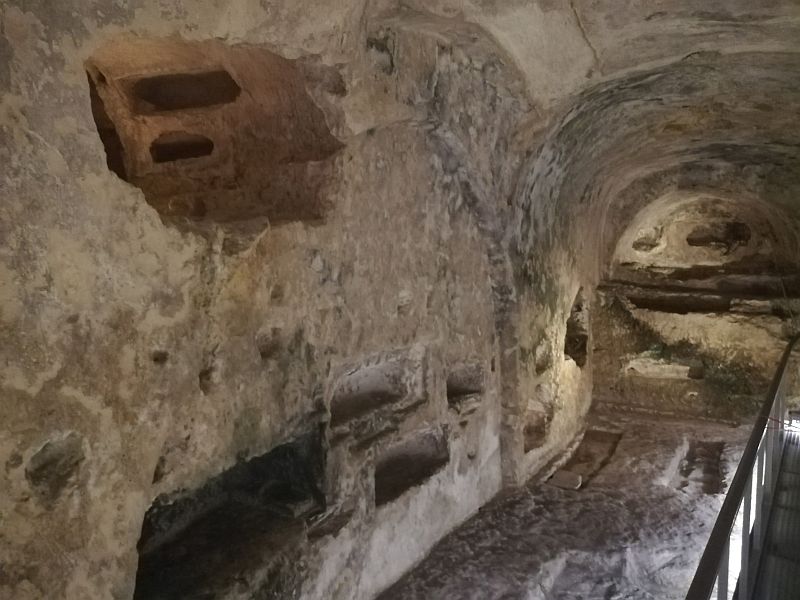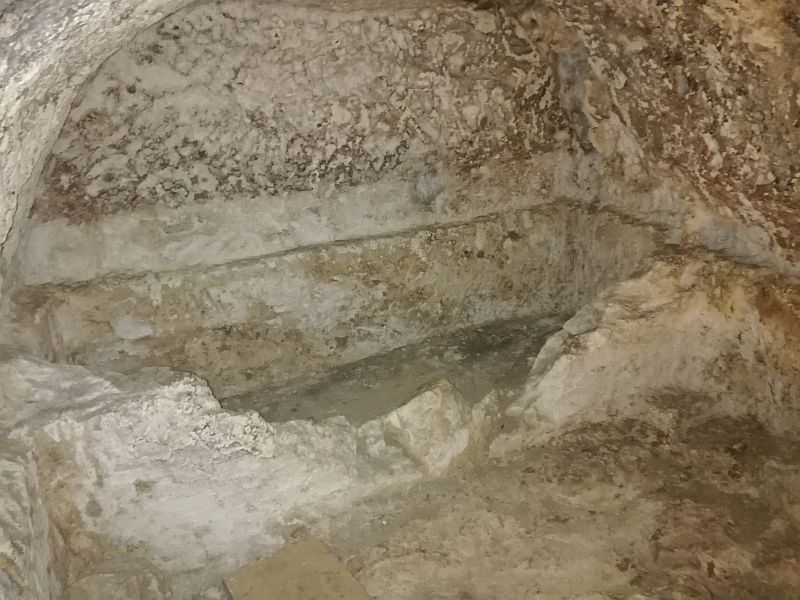St. Paul’s Catacombs are underground burial chambers from Roman times in the city of Rabat (ancient city of Melite), in central Malta. In addition to these catacombs, we also distinguish the catacombs of St. Agata and Katald.
In total, the complex of underground graves of St. Agatha and St. Paul has 30 hypogeas, of which as many as 20 are available to visitors. Catacombs themselves Paweł covers an area of over 10,000 sq m on the ground and 7,000 sq m underground.
Why did the catacombs cover such a large area? This is probably due to the fact that space in Malta is scarce and that everyone could use the burial chambers. In the catacombs, both Christians (who did not appear on the island until the 4th century CE), as well as Jews and Romans were buried; women, men and children; were poor and rich. Urns with cremated ashes or whole bodies were buried in the graves. Objects that are part of clothing that are relevant to the deceased or suggest, e.g., his profession, are often left with the deceased. Many objects were exposed to public view.
Most of the catacombs of this complex were already known to scientists in the mid-seventeenth century. However, it wasn’t until 1894 that the archaeologist Antonio Annetto Caruana began a thorough process of learning and sharing more chambers. Since then, subsequent catacombs were opened to tourists.
According to archaeologists, before the catacombs around the 6th century BCE, Phoenicians, who had their influence in Malta, forged blocks of stone, which were used as a building material. Gradually (around the 4th and 3rd centuries BCE), local people began to use empty stone spaces as graves for the dead, which was continued during the Romans (from 218 BCE). Both Carthaginians and Romans buried the dead outside the city walls.
Originally, the main chamber was forged, which descended vertically, from which two separate burial chambers departed. Over time, smaller spaces were turned into larger catacombs, in which larger numbers of people began to be stored outside the families. It is assumed that the catacombs were used until the 8th century CE when Muslims conquered the island.
Interestingly, the catacombs of St. Paul stand out from other objects of this type in the world in that he has been preserved inside, among others a stone table on which agapas took place – feasts of early Christians, probably organized to celebrate the dead. Interestingly, in the catacombs tourists can also see unique graves with a “baldachin” – carved in a characteristic way in stone.
On the walls of the catacombs, you can also see illustrations and inscriptions in red.
- Catacombs of St. Paul in Malta
- Catacombs of St. Paul in Malta
- Catacombs of St. Paul in Malta










